If you’re a trail runner, you were probably force-fed hundreds of hours of content this past weekend. And you probably loved it. Western States had record live stream views, over two million, and I don’t have hard data, but it also seemed like record attendance.
Growth
It’s undeniable. Our sport has grown a ton. It seemed on a steady trajectory until this year at States. The crowds were massive. I was slack-jawed a few times just from the sheer numbers. We’re seeing a huge boom in trail running. It’s both wonderful to see and horrifying to witness.
With growth comes money to support the storytellers (like me), the athletes, the races, the tech improvements that help every runner, more sustainable businesses, tourism dollars, etc. In many ways, creating media and telling stories has been supporting this growth. But I wonder, is it growing too fast?
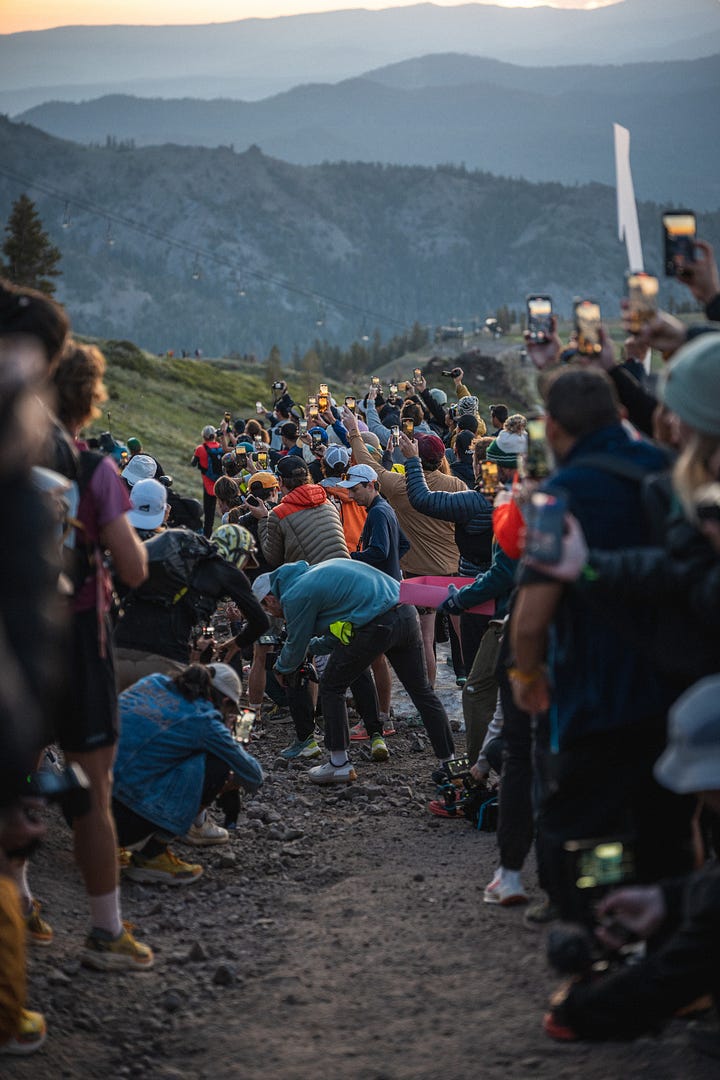

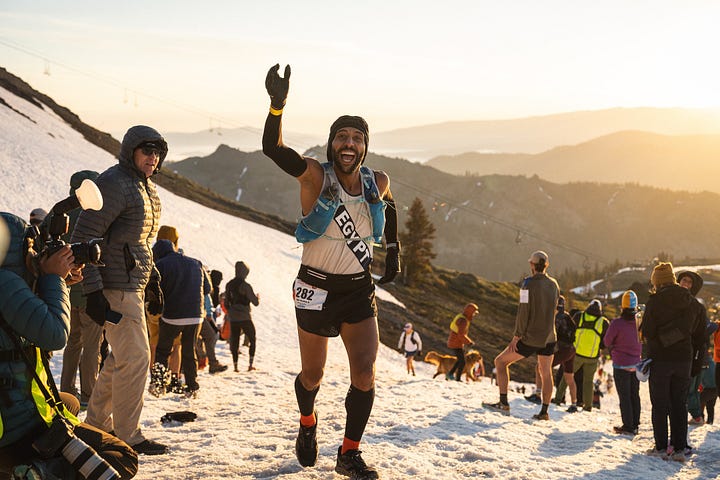
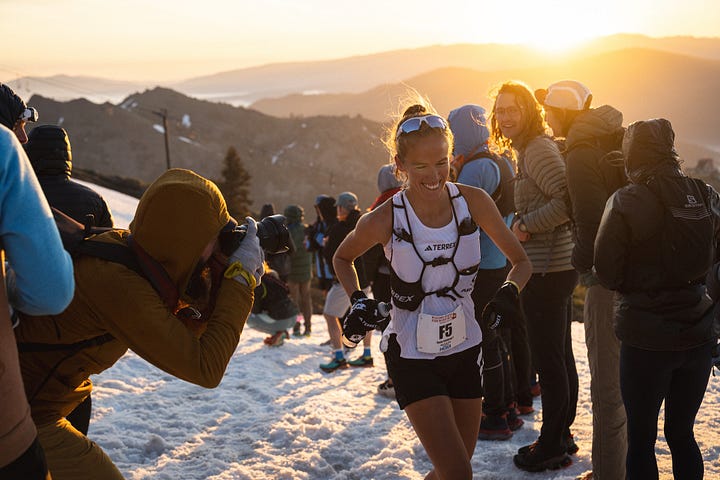

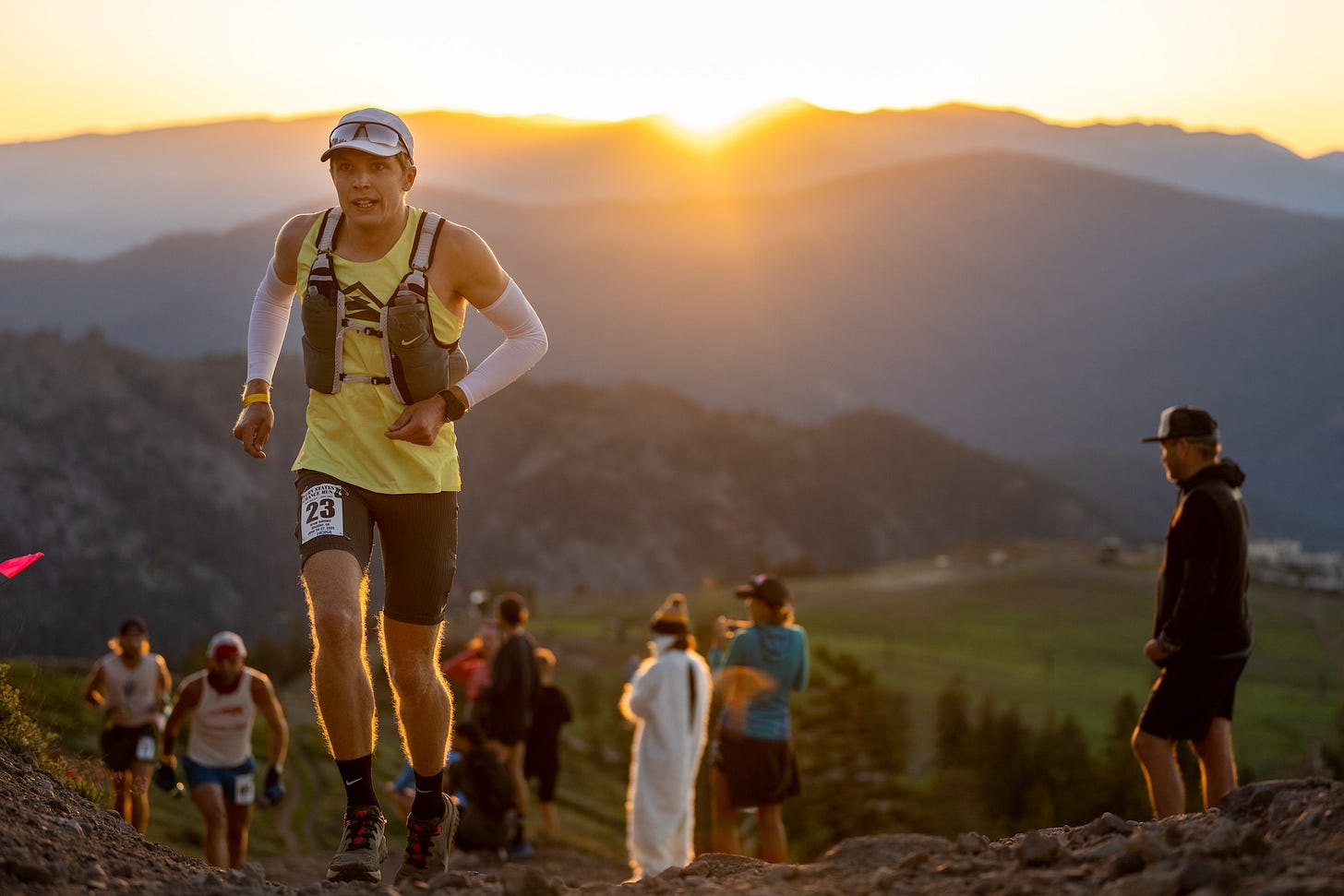
I’m not the first to ask this question. Dylan Bowman has been asking it for years. Before him, others have asked. Growth brings change, and those who were involved before the change will always question it.
I’m not here to stop it. In fact, I can’t. My career relies on its growth, and just stopping what I do won’t change anything or make me feel better.
Bursting at the seams
The Western States course runs through a lot of small, old gold rush towns. Towns with populations in the hundreds. I think we 2-5x’ed the population this weekend. For even smaller towns (neighborhoods?) like Michigan Bluff, we probably 50-100x’ed. Cars lined the streets for miles as parking became a struggle. Giant crowds took up the race course through Forest Hill, causing a small opening for runners and media to cram through. Did this bring a lot of hype? Yes. Did it make the media people’s job harder? Yes.
One sad moment I had at Forest Hill was the lack of trash cans. So many brands showed up with booths to activate the masses. Food and handouts galore. But I couldn’t find a trash can anywhere. This seems like a simple oversight. I wonder, is there any control over which brands can show up there? If so, can we require them to provide trash if they are giving things out? If there is no regulation, then all these brands just decided they didn’t want to deal with trash. I didn’t get to stick around for long, but I hope we didn’t leave Forest Hill a mess.
One thing I am curious about is the athlete’s perspective. Do they like this? I’m sure many love the crowd support. It’s one thing that makes marathons so attractive. But these large crowds are only present for the leaders. The mass noticeably dips by the time the top 10 men have come through. Then again, after the top 10 women. By the time the other 90% of runners come through, there is less hype. So then, do those leaders like it?
I’ve been curious about this topic with the popularization of live streams, too. In Europe, a lot of the big races have constant cameras on the runners. Following via mountain bikes, drones, camera runners, and sometimes helicopters. Do the runners like this? With so much of our sport being about solo runs in nature, does the big race energy kinda suck? Does the constant buzzing of a drone or bike gears for 24 hours suck? I’m actually curious.
The Future of WSER
I can only look at UTMB and see where we’re headed. Congested roads and small towns bursting over capacity. Nightmare getting around and environmental impact issues. Lead athletes who are never given a moment alone on the trail. Local residents dreading the event. Big brands raking in money.
Fortunately or unfortunately, depending on how you look at it, WSER participation is constrained by the number of runners who can run it, so there is some sort of cap. And I think spectators will fluctuate depending on the athletes (stars) who run that year.
But Hype though!
Don’t get me wrong. I like hype. I felt the energy on the escarpment and through Forest Hill. And of course, the wonderful energy at Golden Hour. I loved it, and I’m sure many of the runners did too.
What do we do?
I don’t actually have a solution. I don’t think we should try to stop growth, but I also don’t think we should be willy-nilly about it. It should be on Brands and race organizations to help with the people flow during these events. There is space for improvement here. What could a curated spectator experience look like?
An uncontrolled expansion will probably ruin the experience for runners, crews, race staff, local residents, and even the spectators themselves. It seems to me like a huge opportunity to craft the spectator experience.
Just one idea could be spectator shuttles. I hate to bring up UTMB again, but they have been providing shuttles to help people get around to crew or spectate. Although the issue is the large groups that seem to follow the leaders. UTMB shuttles make leader following impossible. They’re optimizing for the rest of the field.
What if people could park in Auburn somewhere and have buses that go from there to Robinson to catch the lead men and women, then go to Michigan, or perhaps skip that one and just head to Forest Hill and the finish? Or maybe restricting Robinson and Michigan Bluff to media and 1 crew vehicle like other aid stations do. I’m sure there are smarter people than me who could think of some way to do this.
What was it like for you? If you attended States, did you notice the crowds? If so, what were your thoughts?






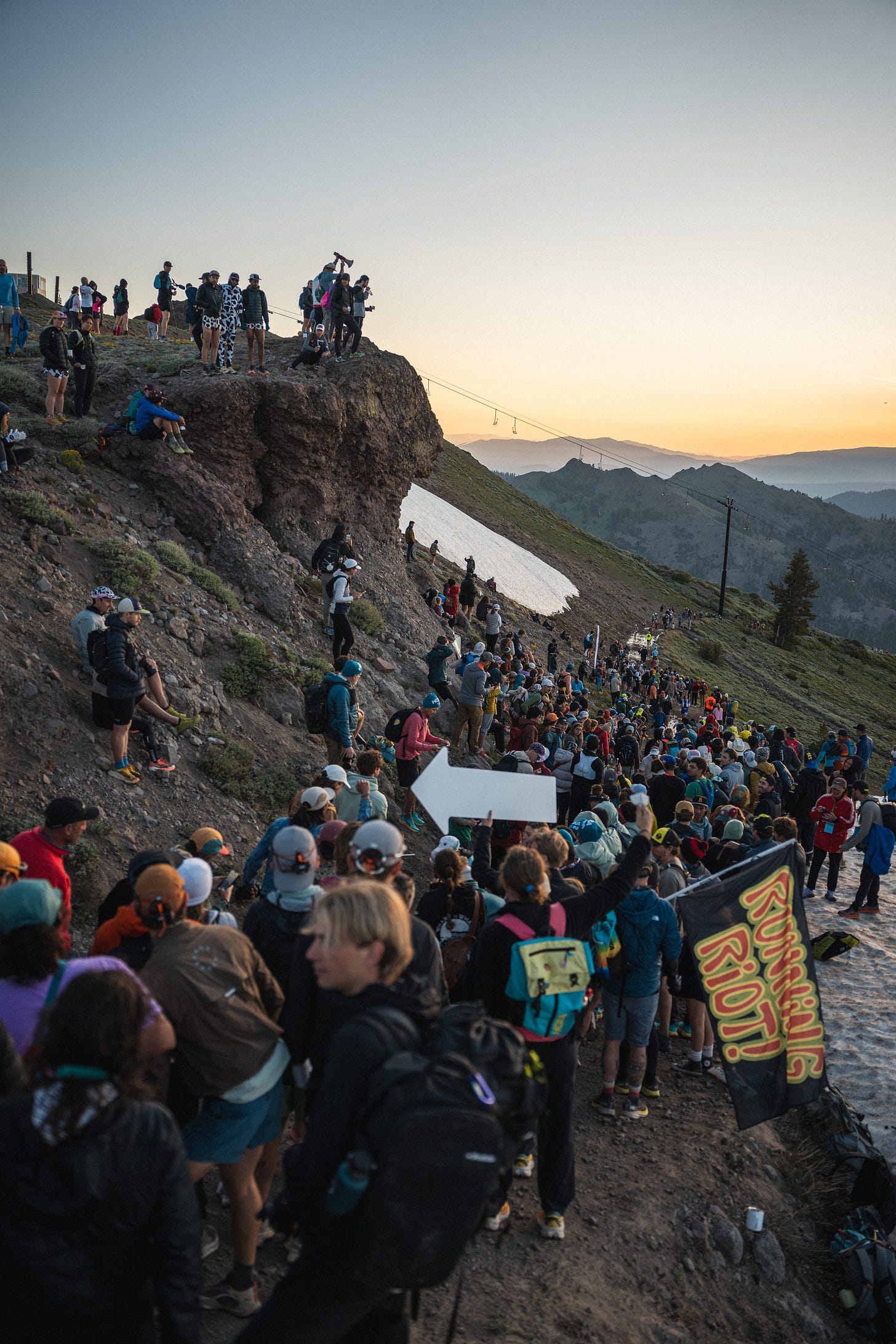

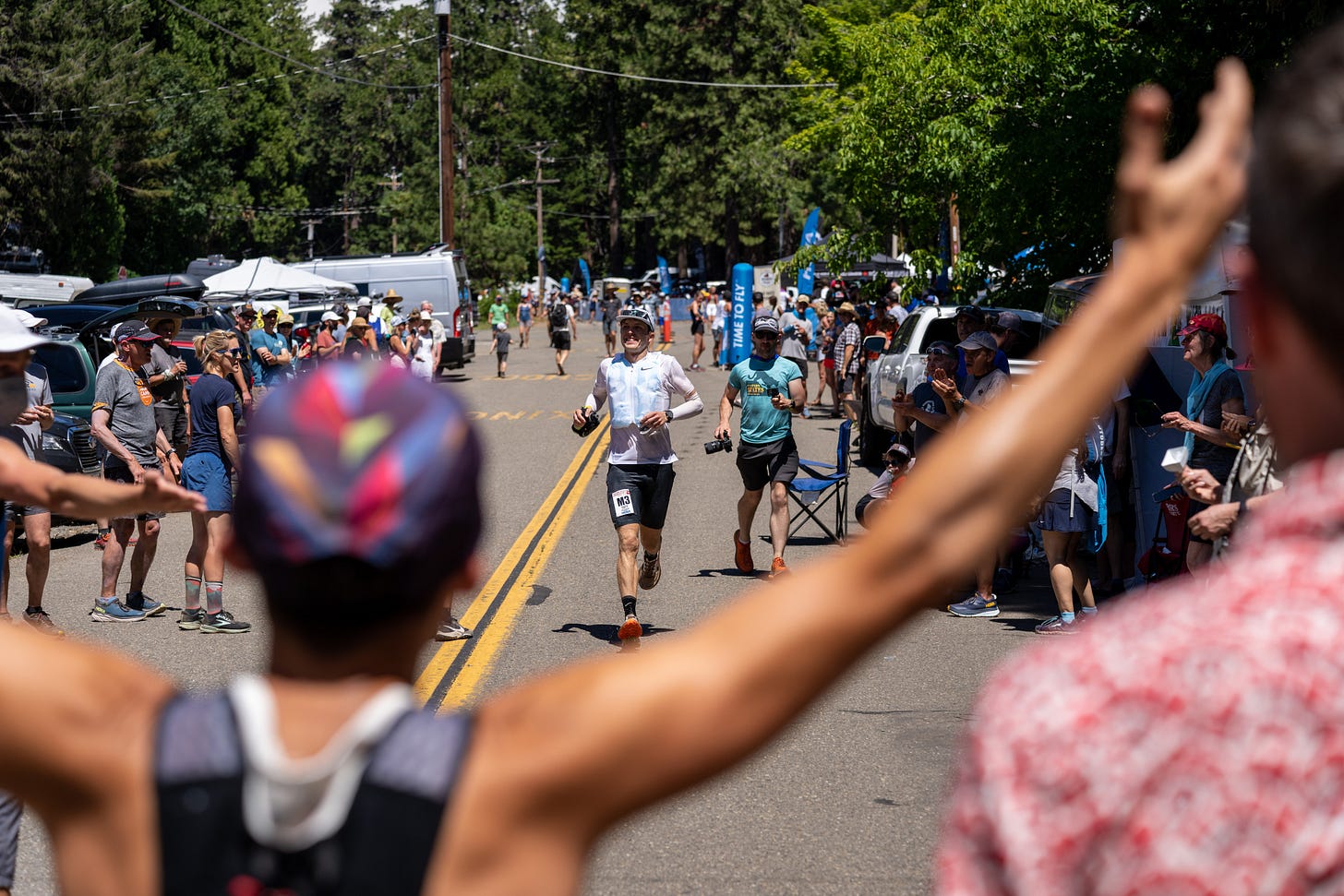
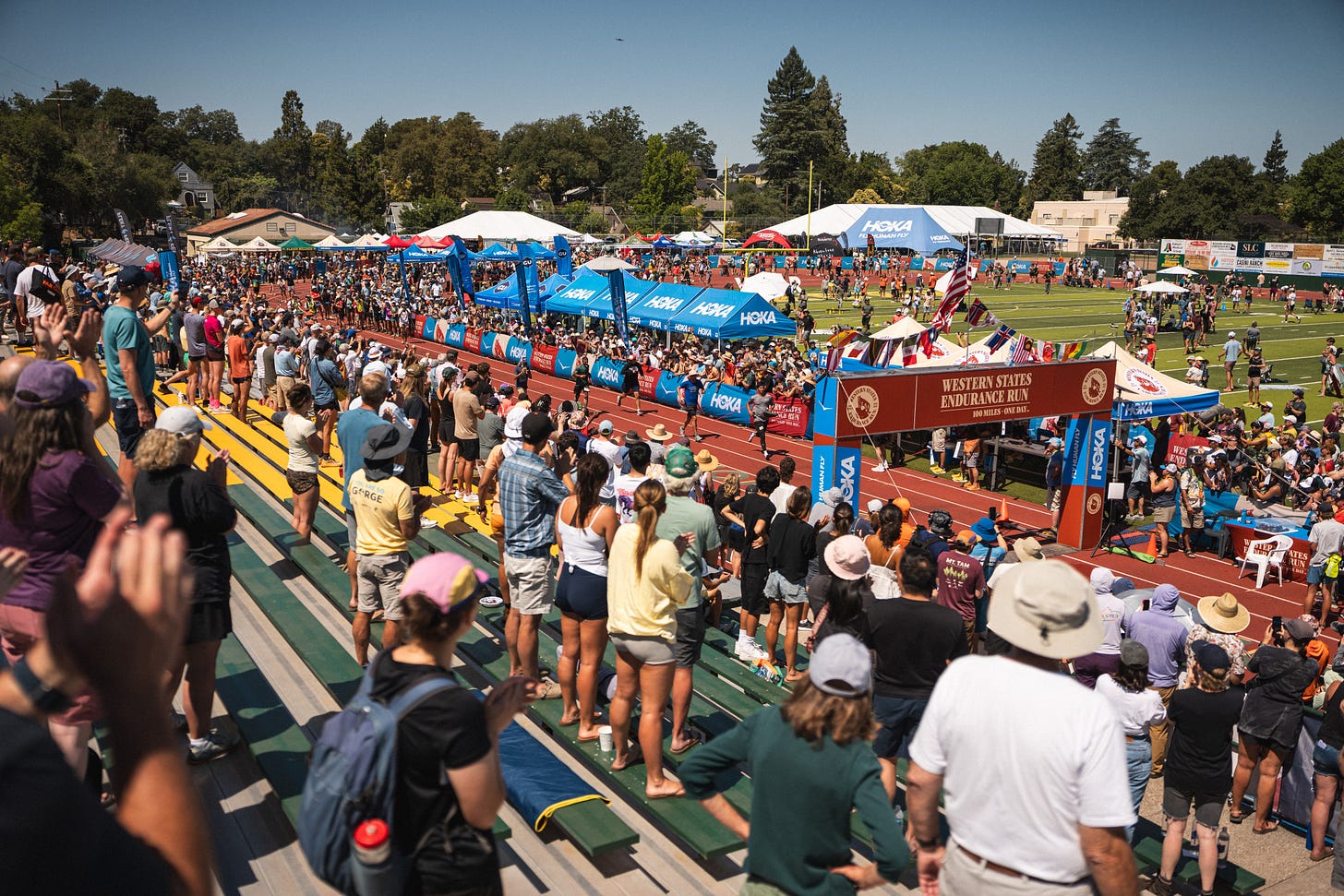

Amen Tony! The push/pull is hard to watch. Seems like visually it’s time for zones across the board at aid station- spectating zones, media zones, crewing zones etc.
Some great points! I also noticed the lack of trash cans and that was very disappointing. I’m hoping forsthill wasn’t left a mess.